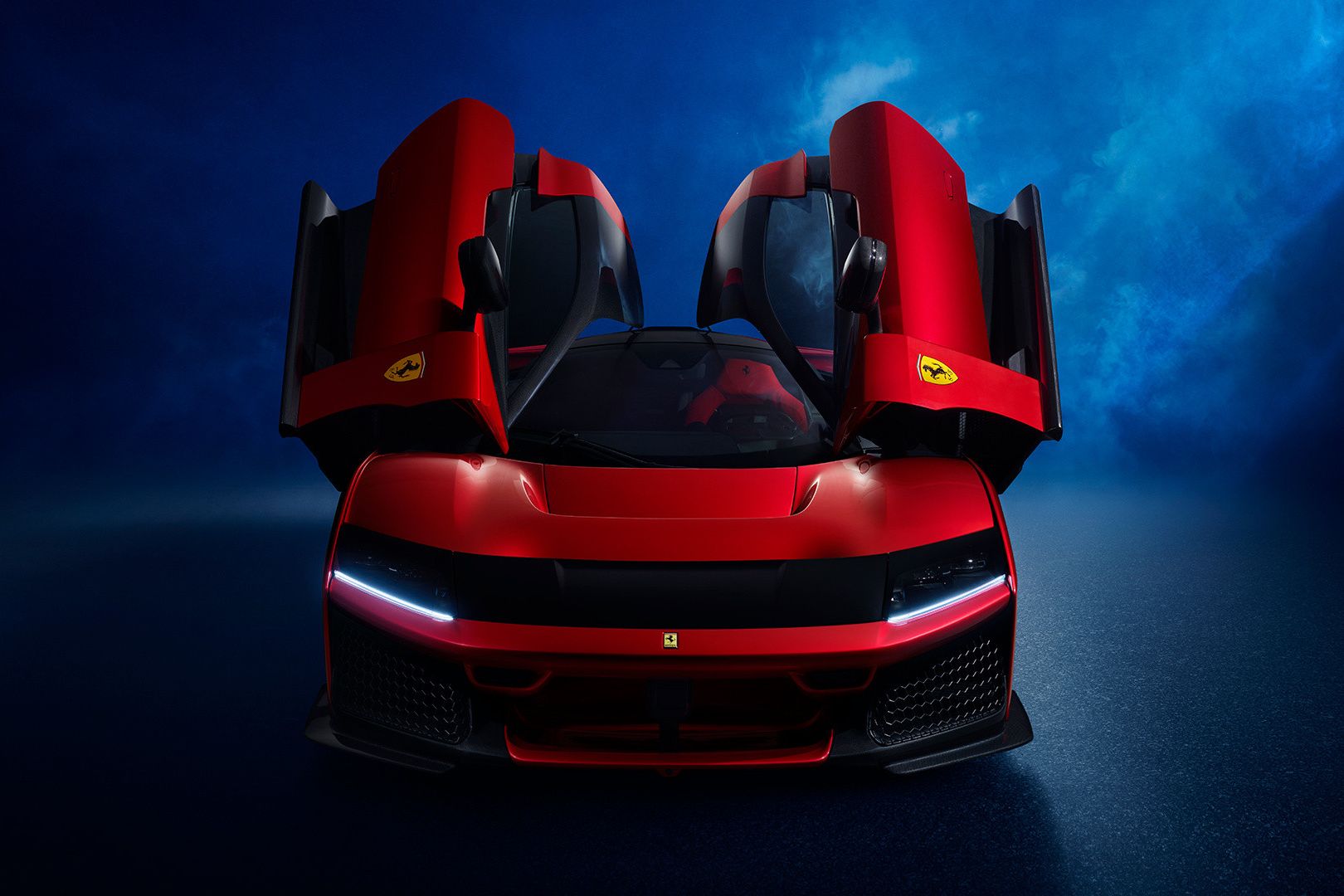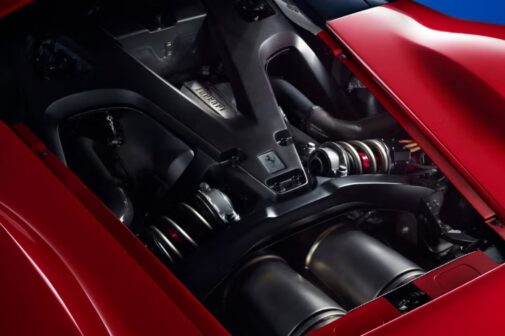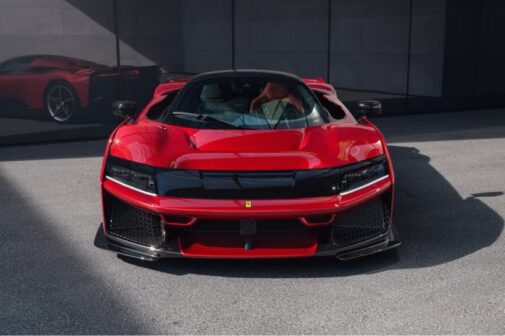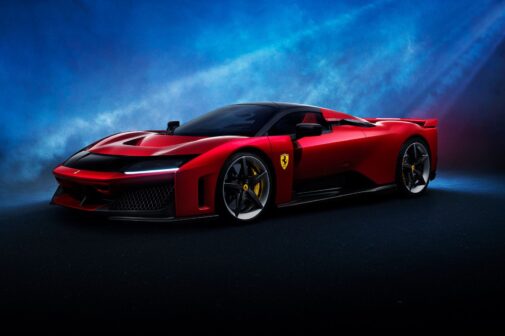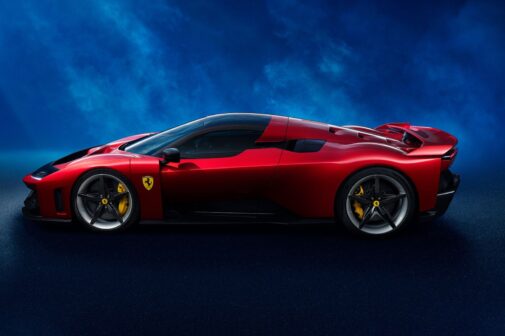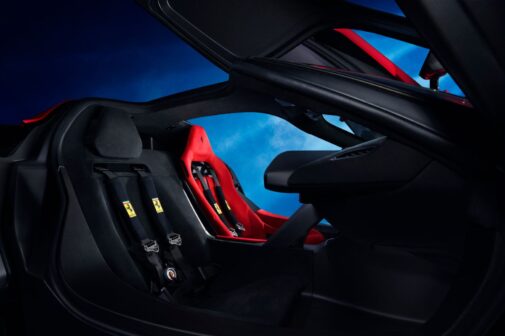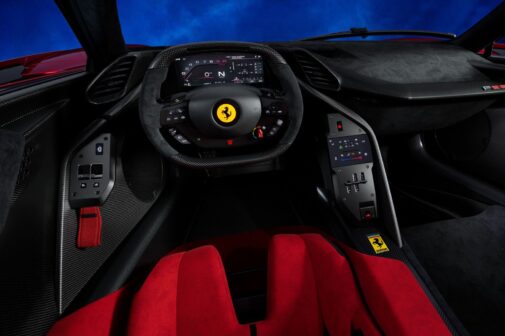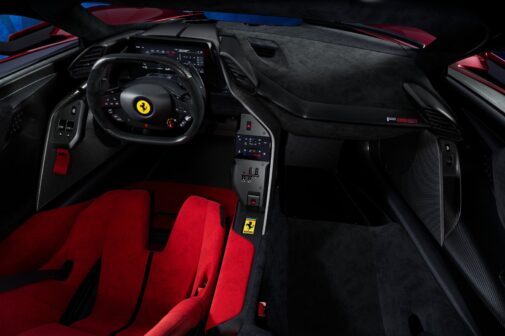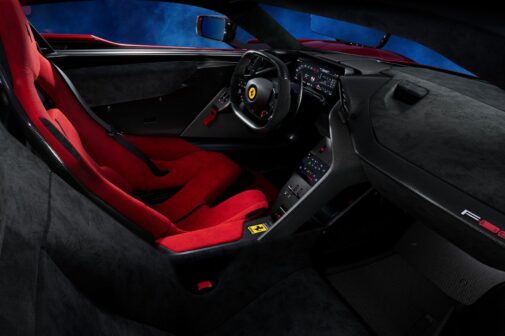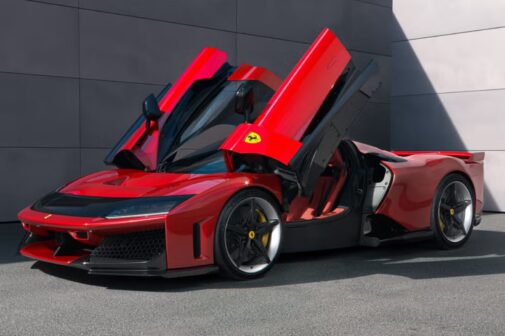They say that in Italy there are two religions: Christianity and Ferrari. The average Italian may even forgo Sunday church to witness the red Prancing Horse roar through the vineyards. Their passion for motorsport racing is, for lack of a better word, absolutely mad – and yet, it makes sense. However, now even the average Italian might question Ferrari’s F80. What went wrong?
To put it into context, the Ferrari F80 is the latest in a line-up of brilliant cars spanning four decades. We’ve had the GTO, the F40, the F50, the Enzo Ferrari (a personal, albeit controversial, favourite of mine), and the most recent iteration, the LaFerrari – the same LaFerrari that some uninitiated people dismiss as fake on social media.
So, what makes the F80 something Enzo would turn his nose up at?
Power Specs – It’s a V6 Hybrid! What more needs to be said?
First off, it’s a hybrid V6! A 3-litre twin-turbo hybrid V6, producing 888 bhp by itself! Though impressive, this is the same 120-degree configuration and a modified version of the engine used in the 499P, Ferrari’s Le Mans 24-hour winner. Makes sense!
The hybrid system adds another 295 bhp, bringing the F80’s total output to 1,183 bhp, making it the most powerful Ferrari road car ever. It features three electric motors – two at the front axle, making the car all-wheel drive (4WD), and a third motor attached to the bottom of the engine.
This third motor serves two purposes: providing regenerative energy (70 kW to the battery) and offering an additional 80 bhp. The battery is an 800V, 2.3 kWh unit, specifically engineered for rapid charging and discharging, though the car does not feature an electric-only driving mode.
Ferrari’s turbo system, called the ‘E-turbo’, is powered by an electric motor positioned between the turbine and compressor, allowing more air and petrol to be turned into pure auditory bliss! Well, not even close to a V12, mind you.
Formula One serves as inspiration here, with the MGU-K and MGU-H making a welcome appearance. The former assists in cranking the engine, energy recovery for battery charging, and providing additional torque for the engine. The MGU-H primarily focuses on generating power from the kinetic energy of the E-turbo’s turbines. Ferrari got some things right – this is a supercar.
The F80 is equipped with Brembo’s CCM-R Plus carbon-ceramic brakes, combined with air intakes – termed ‘nostrils’ – at the front, which channel air through the front subframe to cool the brakes. Ferrari states that these brakes are designed to handle the immense forces generated by the car’s power and downforce.
Aerodynamics – Impressive or Overkill?
Remember what Enzo said about aerodynamics? Well, Ferrari threw that out!
The aerodynamic features of this supercar are nothing short of astounding! The F80 can generate nearly one tonne of downforce at 250 kph, with a split of 460 kg at the front and 590 kg at the rear.
How does Ferrari achieve this? Its underbody features bargeboards, a deployable front splitter to reduce drag, and a massive rear diffuser. The active rear wing can rise by 200 mm to act as an air brake or flatten out for less drag. Ferrari’s familiar S-duct system channels air from underneath the car and over it.
What can this car do, then? A top speed of 350 kph and 0-100 kph in 2 seconds. It also reaches 0-200 kph in just 6 seconds!
Perhaps Enzo was wrong after all?
Design – Eye-popping or Just Another Ferrari?
The car abandons traditional Ferrari styling in favour of a more futuristic, visor-like design.
The car loses many of its iconic curves. For car enthusiasts like myself, this is a disappointment. Remember the LaFerrari? It looked like something you would sketch in school – sleek, curvy, and aerodynamically ahead of its time.
However, Ferrari has now given it a ‘blocky’ front. It does look aggressive, and the incorporation of carbon fibre in key areas adds to the aero-driven design ethos. Ferrari claims that every part of the car serves a functional purpose.
If you recall the Czinger 21C from the early 2020s, which was entirely AI-designed, Czinger claimed that the car was made with one goal in mind: going fast.
While Ferrari may not have taken direct inspiration, it seems to follow the same mental trend within the industry today.
Flavio Manzoni, Ferrari’s chief design officer, explained that the team wanted to avoid the typical “two eyes and a mouth” look common in sports cars. Instead, they aimed for a cleaner, more mysterious appearance, drawing inspiration from science fiction.
The car features what Ferrari calls the ‘Impluvium’ intakes – NACA duct-shaped inlets on the shoulders of the car, which appear as if the bodywork is peeling away from the central tub. These feed the engine’s intake and intercoolers, helping keep the powertrain cool during high-performance driving. The body has a flat, square-shouldered design, emphasising its wide, muscular stance.
The front of the car features air channels, or ‘nostrils’, directing airflow through the front subframe to cool the Brembo brakes. At the rear, a massive diffuser starts midway down the body, creating significant downforce. The active rear wing rises up by 200 mm and tilts to function as an air brake or lies flat for low drag, depending on driving conditions. The overall design clearly shows the F80 is shaped by aerodynamic demands, resulting in a brutal, performance-focused look.
Step inside, and you’ll find a standard Ferrari interior – and that’s a very good thing, considering the car is decidedly un-Ferrari everywhere else.
The F80 adopts an unusual 1+1 seating layout, with the passenger seat positioned slightly behind the driver, reducing cockpit width by 50 mm for better aerodynamics. The passenger seat is fixed to the carbon tub, while the driver’s seat is adjustable.
The steering wheel is ‘squircle’-shaped (a blend of square and circle) and reintroduces physical buttons, a shift away from Ferrari’s recent reliance on touch controls.
The traditional Ferrari driving modes are present on the steering wheel, with the familiar ‘Manettino’ switch on the right side for selecting handling settings: Wet, Sport, Race, CT Off, and ESC Off. On the left side, there are three powertrain modes: Hybrid, Performance, and Qualify. Hybrid is meant for road driving, prioritising efficiency, while Performance focuses on speed, keeping the battery charged.
A floating centre console with exposed screws highlights the car’s stripped-back, performance-first ethos. There is no physical rear-view mirror; instead, a digital camera serves this purpose, adding to the tech-driven approach. The overall cabin feel is minimalist, focusing strongly on the driver, reaffirming Ferrari’s belief that the car is meant to be experienced beyond the track.
Exclusive, Expensive, and You Still Probably Won’t Get One
This is a limited-production unit, with only 799 units of the Ferrari F80 being made.
Ferrari is known for being highly selective with its limited-run models, and the F80 is no exception. While the allocation process has reportedly become more transparent, it still heavily favours long-term Ferrari customers. Those who attend Ferrari events, participate in racing, and actively promote the brand’s heritage are more likely to be chosen. Despite this, many enthusiasts will miss out, with the second-hand market likely becoming the only option – albeit at an even steeper price as demand rises post-launch.
The Ferrari F80 comes with a hefty price tag of £3.1 million (Rs. 31 Crore), reflecting its exclusivity, performance, and cutting-edge technology.
Enzo Ferrari, you’re probably sitting in heaven’s version of Modena, Italy, building cars that bring smiles even in heaven. What would you say to this? My thoughts have changed – perhaps Ferrari is onto something with this decidedly un-Ferrari approach. Perhaps your quote didn’t stand the test of time.





